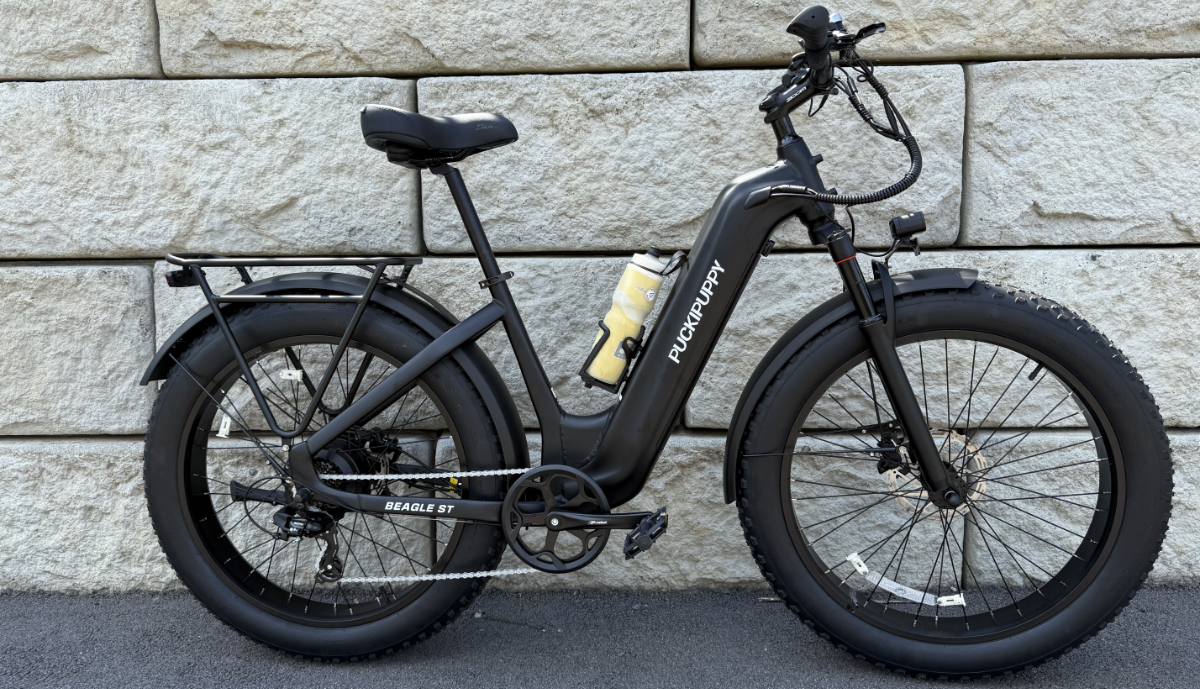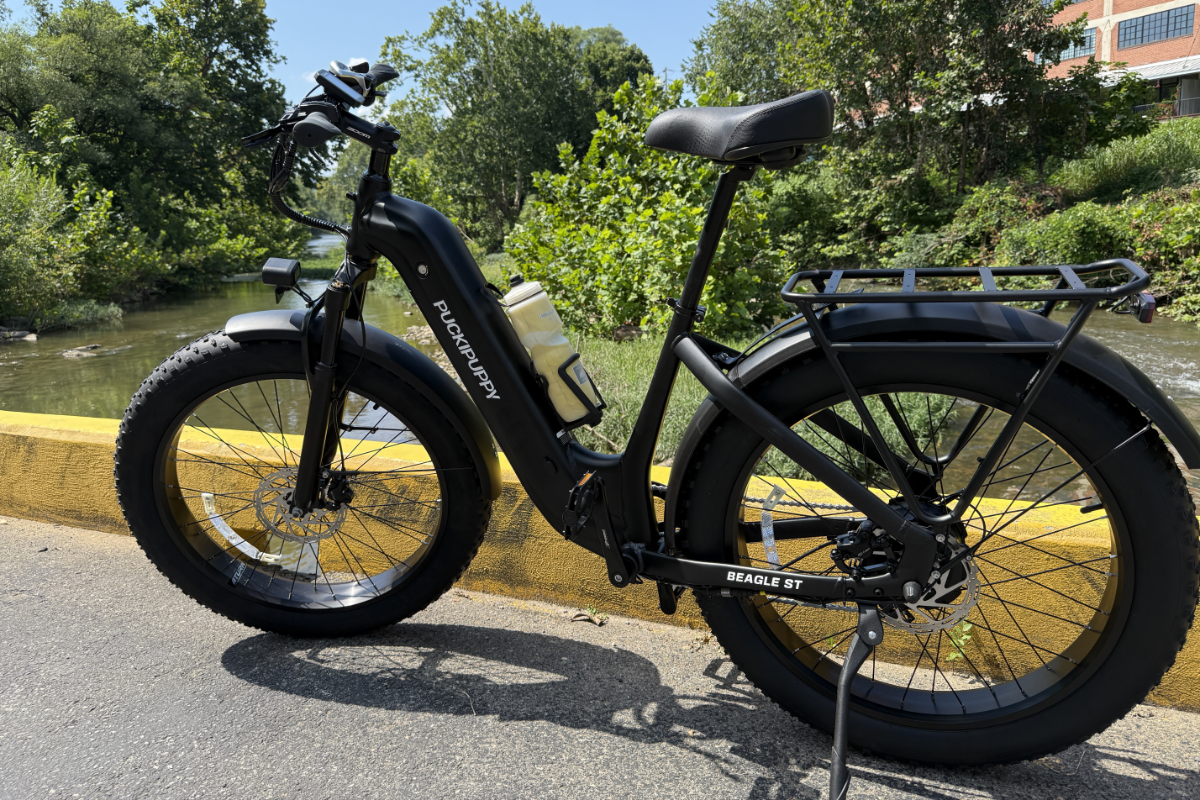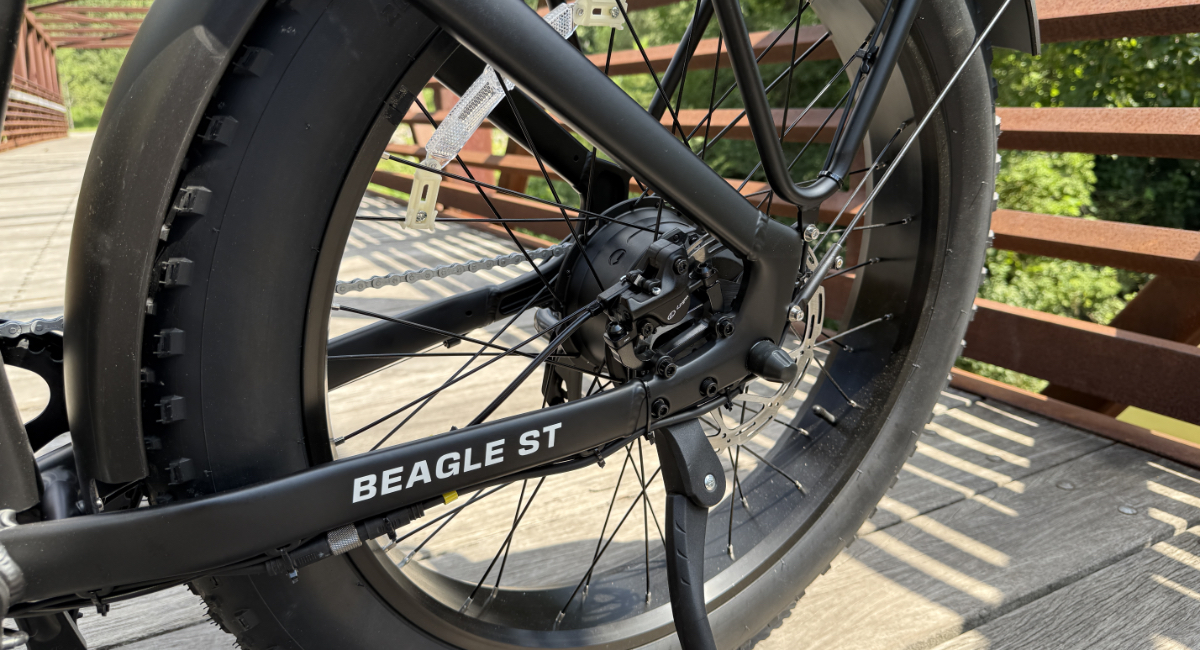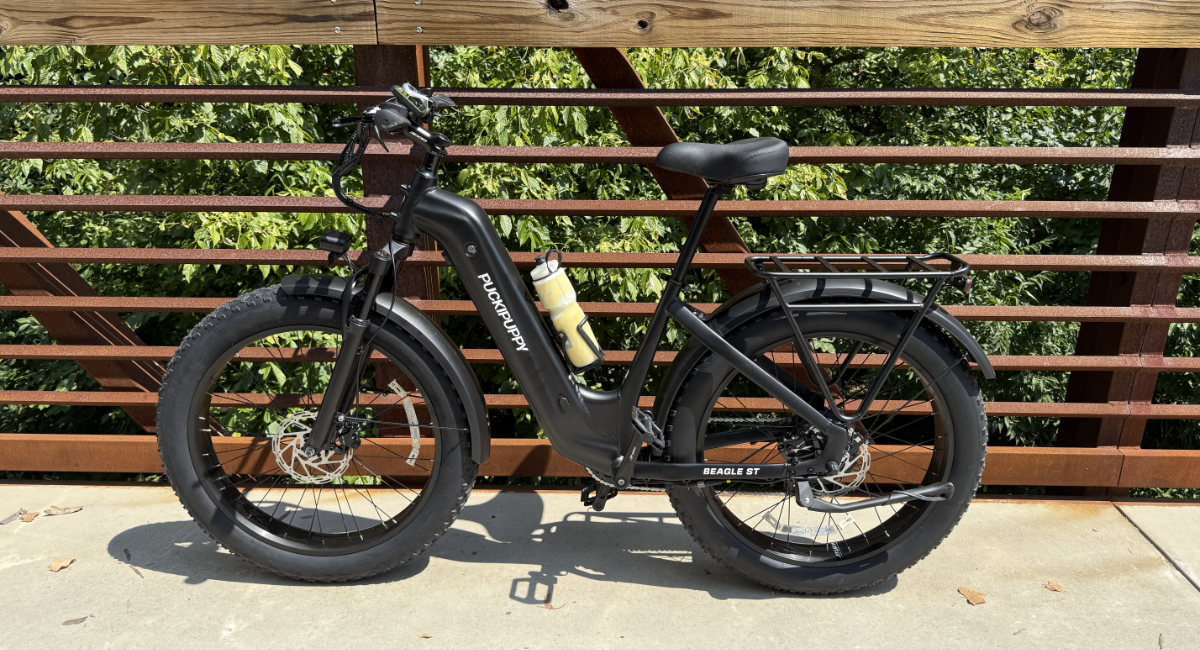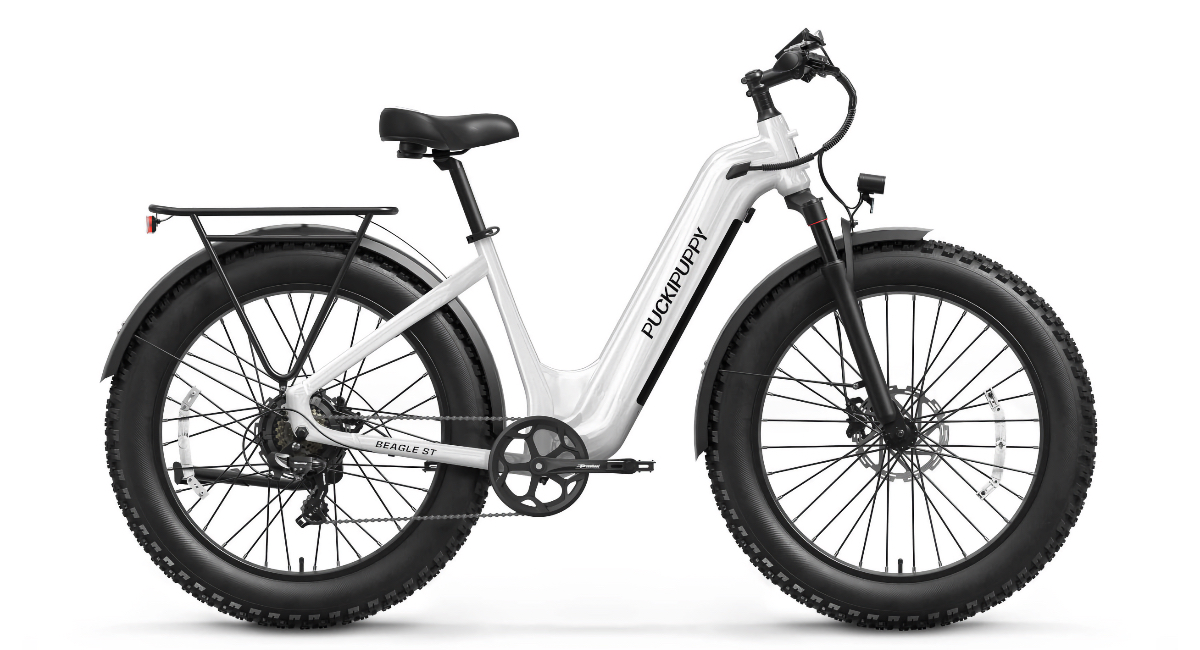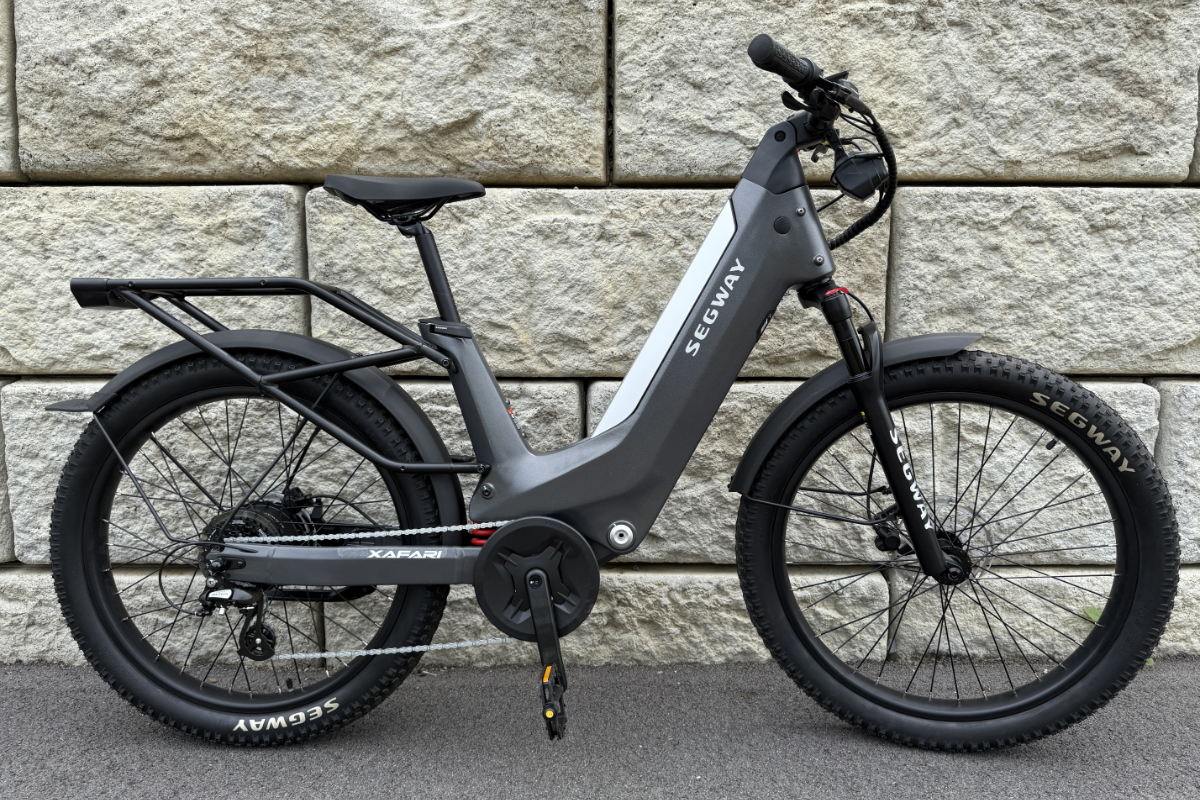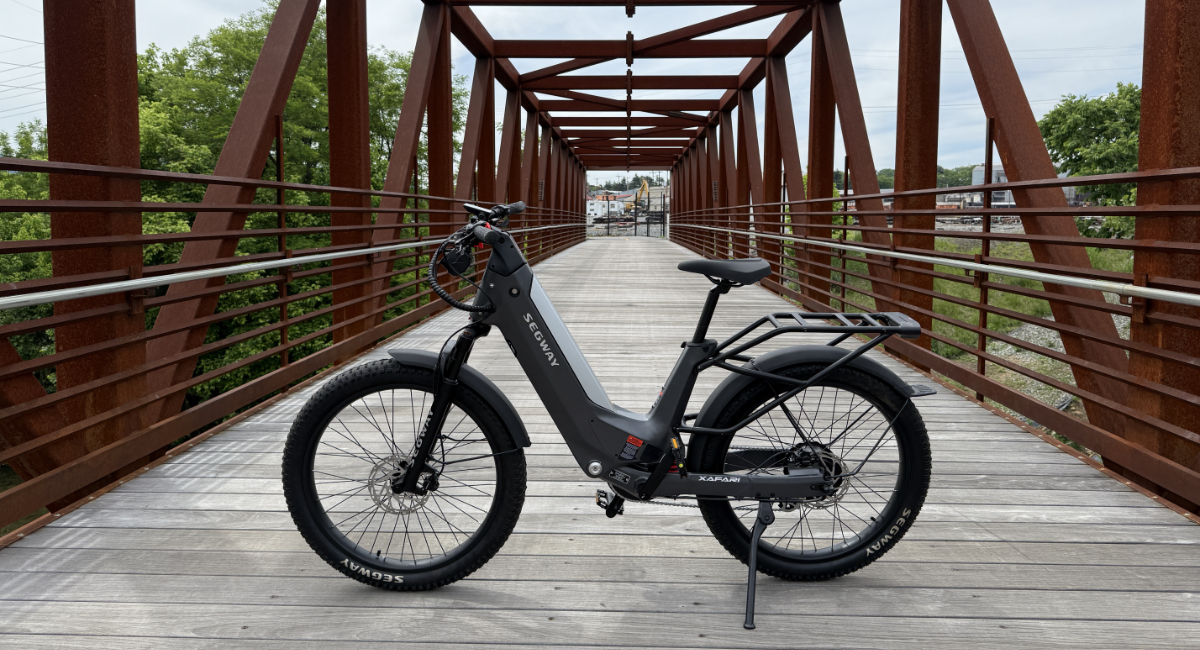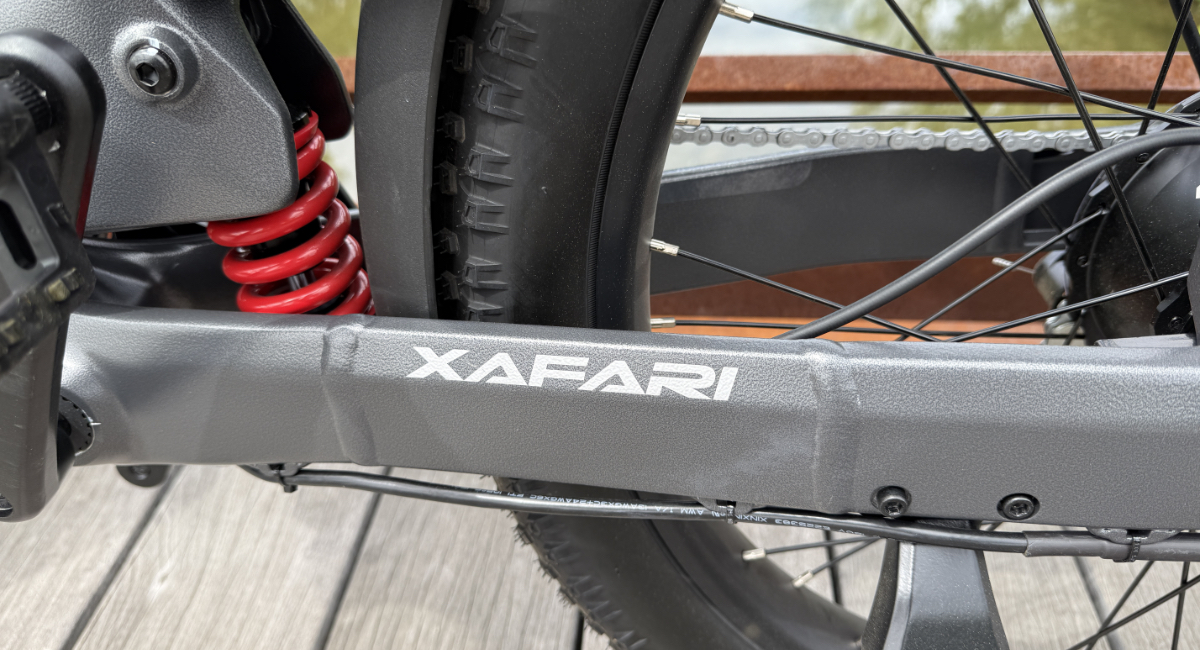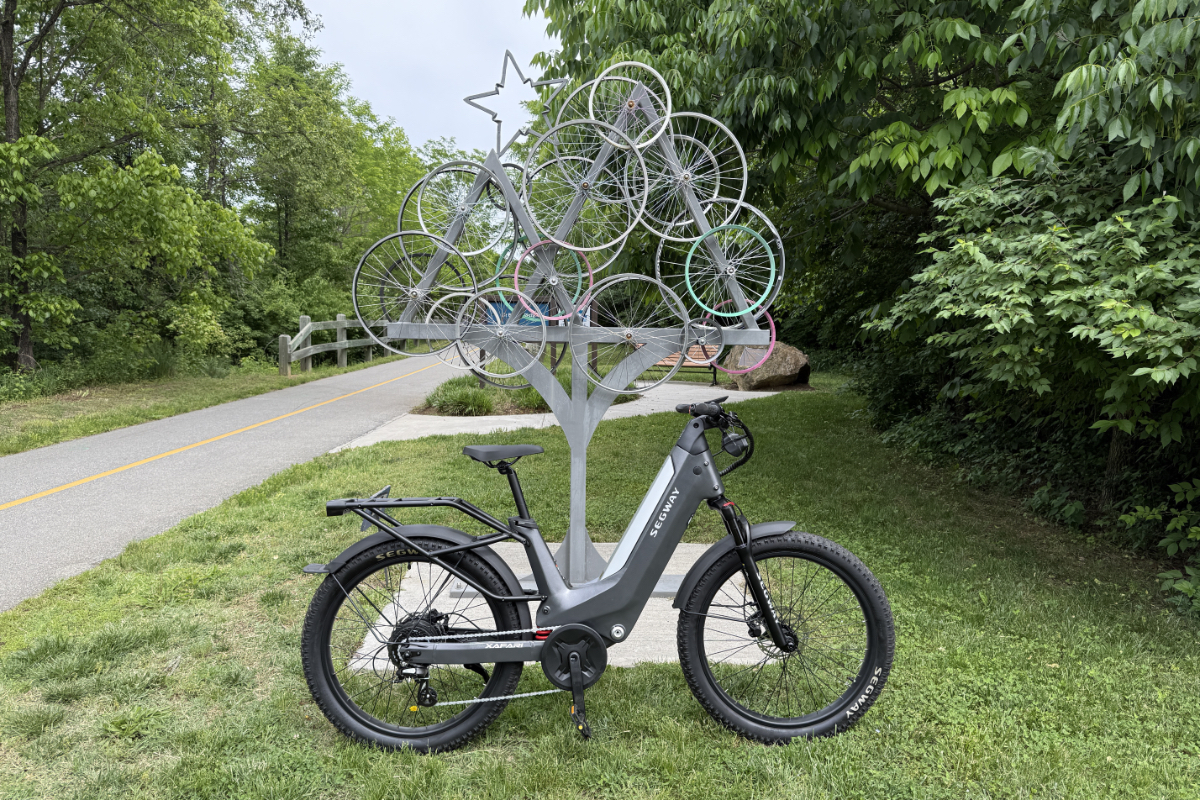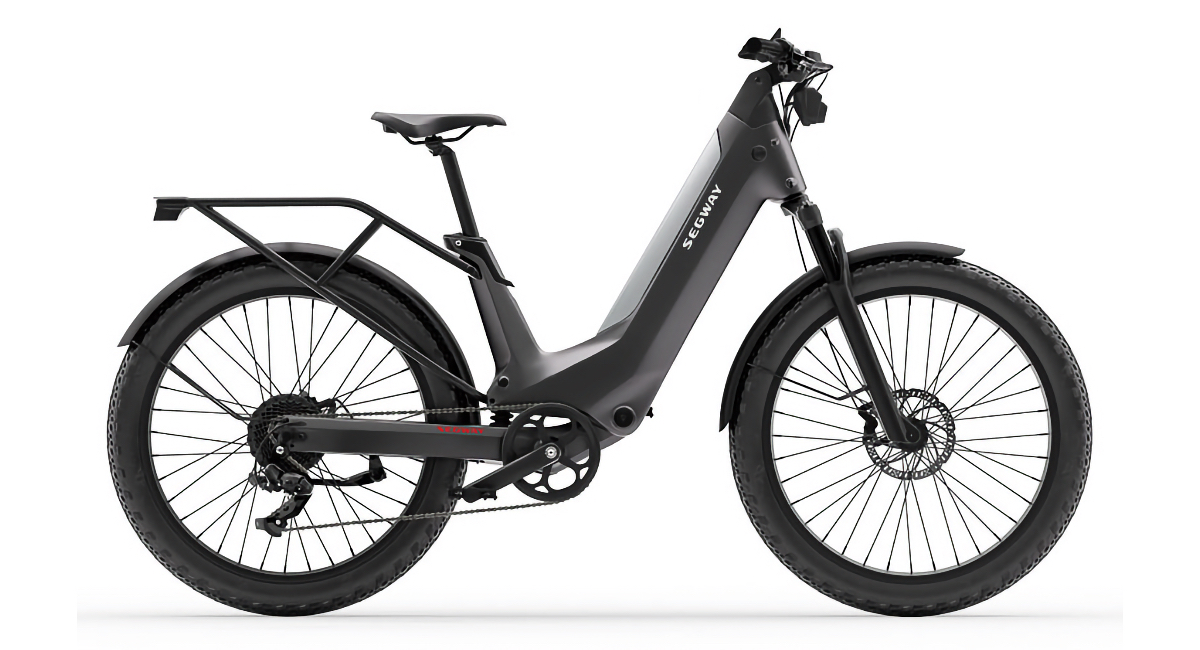There is no question that the e-bike market has become increasingly saturated over the past few years, to the point that there are now dozens of companies offering dozens of models to choose from. That’s made it harder and harder for brands to stand out, forcing some manufacturers to look for new ways to separate themselves from the competition. One such brand is Mokwheel, which has come up with a novel way to promote its latest models, including the Mokwheel Onyx. But as it turns out, one of the company’s selling points is a bit too gimmicky, especially because the bike is so good that it easily stands out on its own.
So, what does the Mokwheel Onyx bring to the table, and what is this gimmicky selling point? Read on to find out.
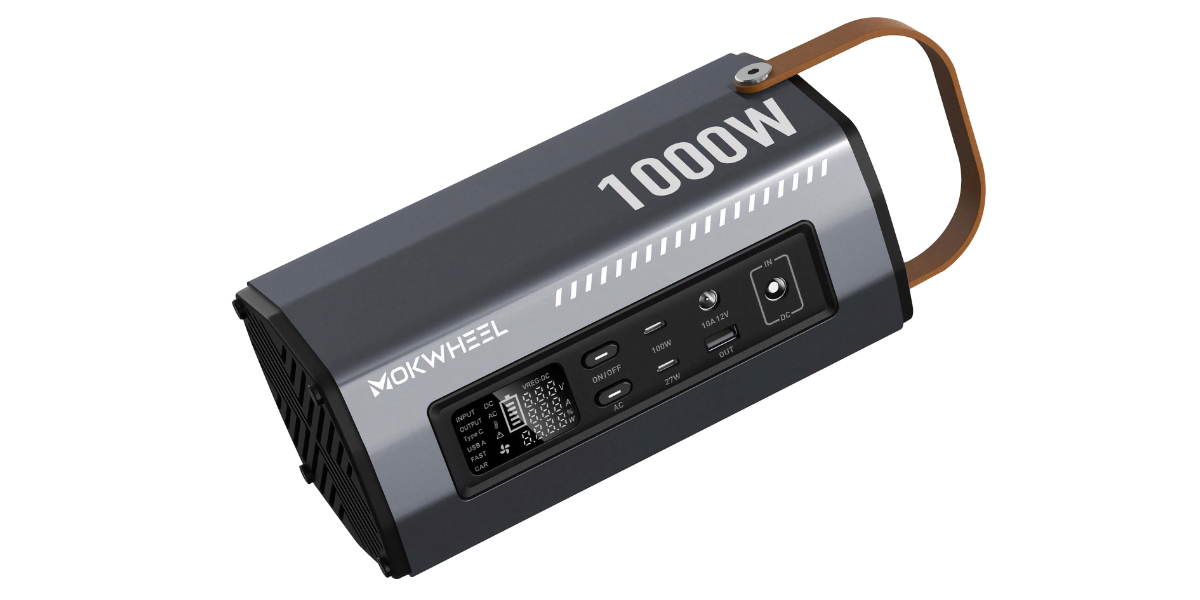
Photo Credit: Mokwheel
The Mokwheel Inverter
Obviously, I’ve teased Mokwheel’s “gimmick” in the paragraphs above, so before we dive into the e-bike review itself, let’s touch on that elephant in the room. The company is marketing the Onyx, and several of its other models, alongside a new accessory designed to help keep the bikes charged while away from home. Like, at a campsite, for instance. That new accessory is a 1000W inverter that provides power on the go and can even be recharged in the field using solar panels. Sound familiar?
The inverter includes a small LCD screen for monitoring power in and out, two USB-C ports (27W and 100W), and a single USB-A port. In other words, it is a lot like a portable power station, which many of us have been using to power our devices while camping and traveling for years. The device weighs just 3.53 lbs, which puts it on the smaller side for a power station, but in most other regards, it functions about the same.
To be clear, Mokwheel didn’t send me the Inverter or its solar panels to test as part of this review, so I haven’t personally tried the device. But I have tested and reviewed numerous power stations over the years, and would say this doesn’t bring much new to the table. It is compact, relatively lightweight, and well designed. But if you already own a portable power station and a solar panel, chances are you can already recharge an e-bike battery while traveling off-grid.
All of that said, I do applaud Mokwheel’s efforts to set themselves apart in the very crowded e-bike space. Offering this accessory to customers is a great idea, and since it’s priced at just $ 299, it’s an affordable add-on, too. As accessories go, I’ve seen worse options from other bike manufacturers, and the Inverter does help raise awareness of alternate options for keeping your bike—and other gadgets—functioning on the go.

Photo Credit: Kraig Becker
A Bike So Good It Doesn’t Need Gimmicks
With all of that out of the way, let’s talk about the Mokwheel Onyx itself, because there is a lot to love about this bike. It features a 1,300W mid-drive motor and a 750W battery, which working together give it a range of up to 80 miles on a single charge. Standard disclaimers apply here, of course, as real-world range will vary depending on the level of power assist used, the weight of the rider (plus any cargo), and how hilly the terrain is. That said, as a heavier rider (210 lbs), I was still able to get 65+ miles of range out of this bike on mixed terrain with some hills.
The Onyx’s mid-drive motor moves its center of gravity onto the frame, giving it a different ride profile compared to e-bikes with a rear hub-mounted drive instead. The result is a controlled, surprisingly maneuverable bike that handles well even on tight turns. Even beginner riders will quickly feel at ease in the saddle, cruising along with confidence on pavement, dirt, sand, and snow.
Speaking of cruising along, when activated, the Mokwheel Onyx offers riders five levels of power assist, allowing them to dial up as much or little effort as they’d like. That’s not uncommon for most modern e-bikes, but what was unusual was how smoothly the bike switched modes. Some models can be quite abrupt when increasing or decreasing pedaling power, but not so here. Riders get a very nice transition between pedal assist levels, with each feeling noticeably different from one another. That same level of smoothness is also felt in the bike’s thumb throttle, which allows you to move without pedaling at speeds up to 28 mph.
The bike also comes with a full-suspension, meaning in addition to the suspension in the front fork (135mm of travel for my fellow bike nerds), it has a second 50mm shock absorber mounted on the seat tube. This, combined with a plush seat and 4” fat tires, gives the Onyx one of the most comfortable rides we’ve ever had on an e-bike. All of that comfort made the bike a joy to ride, even over rougher terrain, although the additional components do add to the bike’s substantial weight. More on that below.
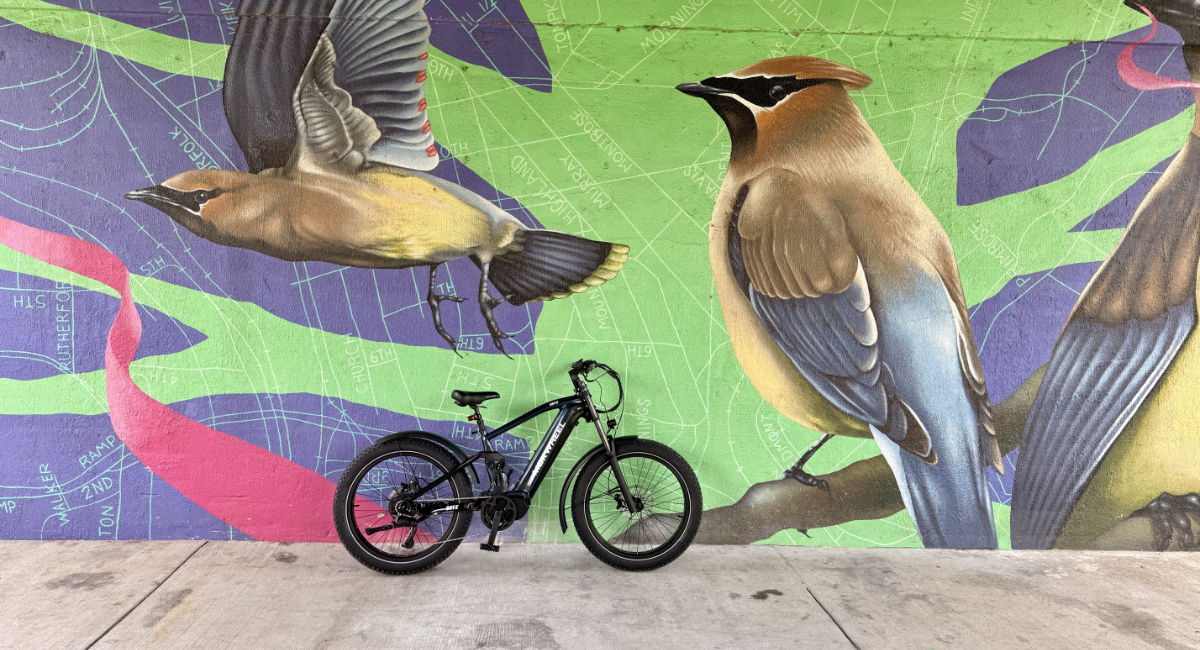
Photo Credit: Kraig Becker
Other Features and Components
Normally when we review an e-bike, we tend to describe the standard bike components—shifters, derailleur, groups set, and so on—as merely “adequate.” That’s because the vast majority of manufacturers focus their attention on the motor and battery, and in an effort to keep costs down, don’t use quality parts elsewhere. So much so that a majority of of brands even use the same low-end components, which tends to make a lot of models feel somewhat the same. That isn’t the case with Mokwheel, however, as the bike actually comes with quality parts that you’ll actually want to use. The result is smoother shifting, better reliability, and an overall more premium feel.
The bike’s LCD screen is bright, clear, and easy to understand, sharing a lot of information at a glance. That includes the current pedal assist level, battery status, speed, distance, traveled, and more. The display was a little hard to read while wearing polarized sunglasses, but otherwise it works great even in bright sunlight.
Other components and features of note include responsive hydraulic disc brakes, a bright headlight, and a precision torque/cadence center that modulates motor output to match the rider’s efforts. The bike even comes with a dropper post, which is somewhat rare in non-mountain bikes. That feature allows you to quickly and easily adjust the height of the seat, including doing so mid-ride to provide more control on descents. We didn’t find it especially useful here, but it is a nice addition that separates the Onyx from other models on the market.
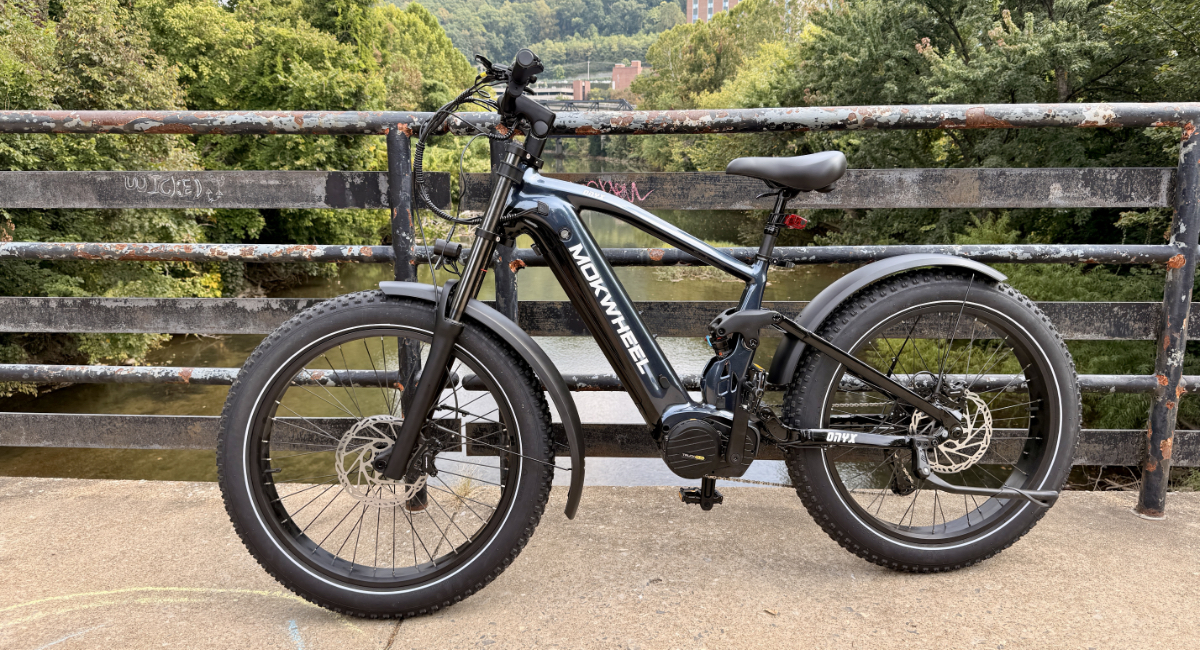
Photo Credit: Kraig Becker
A Weighty Issue
All in all, the Mokwheel Onyx is one of the top e-bikes we’ve tested, offering a very smooth and comfortable ride. But as we alluded to above, there is one glaring issue—the bike’s weight. The Onyx’s official specs say it tips the scales at 89 lbs., which is heavy even by e-bike standards. Considering its dual suspension system and burly frame, it’s easy to understand why it weighs so much. Those components are crucial to giving it such a smooth and comfortable ride, but they also add a lot of bulk.
To its credit, owners won’t really notice all of that weight while actually riding the Onyx, so long as the battery is charged and the motor is engaged. Trust us, this is not an e-bike you would ever want to ride without pedal assist, unless you’re in need of a very good workout. But even with level 1 pedal assist engaged, it is easy to ride along at a brisk pace. The powerful motor easily overcomes the added weight, giving riders a thoroughly enjoyable experience.
The bike’s weight does make it challenging to load and unload from an RV or other vehicle, however, including loading it onto a bike rack. Many e-bike-specific racks do have built-in ramps that aid in that process, but you’ll want to check the rack’s maximum weight capacity to ensure the Onyx—combined with any other models—doesn’t exceed that limit. This will be less of an issue if you own a toy hauler or other RV with a sizable gear garage, but it is still something to keep in mind.
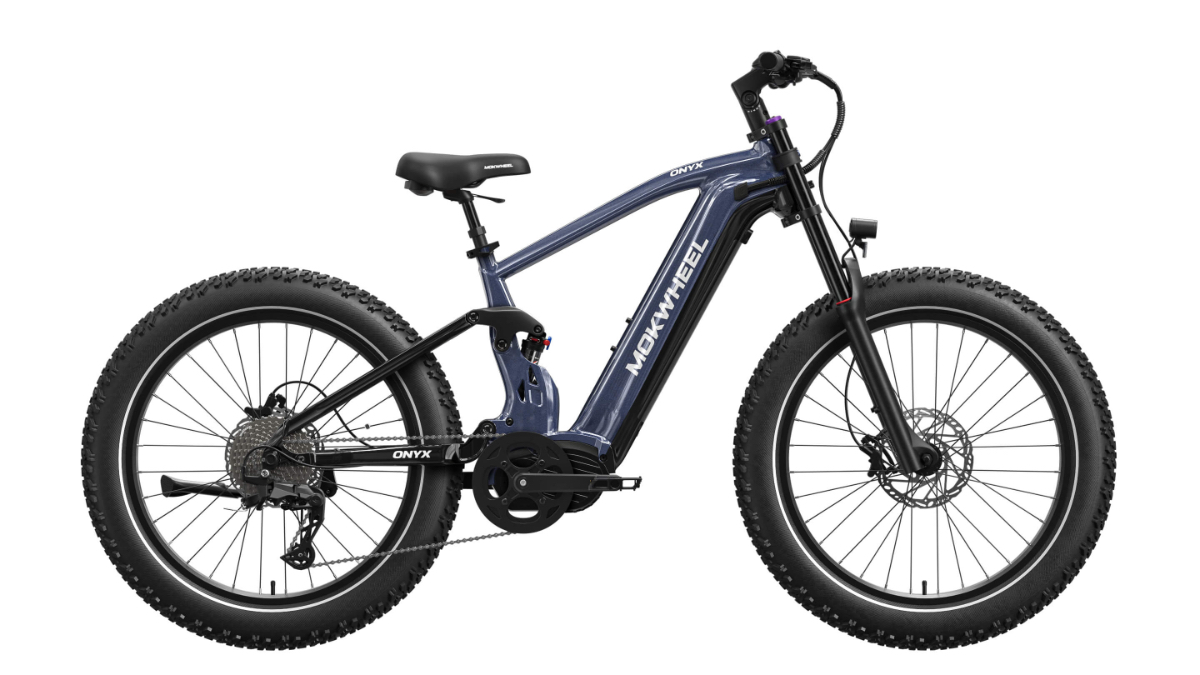
Photo Credit: Mokwheel
A Premium E-Bike Experience
Aside from the weight, there is very little else about the Onyx to complain about. As noted above, the bike’s components, motor, battery, and other parts are all top-notch, which translates into a wonderful riding experience. The bike always feels controlled and maneuverable, with plenty of power to roll along at a comfortable pace or conquer steep hills. This is definitely one of those bikes that will put a smile on your face while in the saddle.
All of this adds up to a premium experience compared to most other e-bike models on the market. With that in mind, the Onyx unsurprisingly comes with a premium price. Mokwheel sells this model with an MSRP of $4,088, although it is on sale as of publication for $3,288. Is it worth that price? As someone who has ridden and tested numerous e-bikes over the years, I can definitely say that it is, provided your budget allows. Everything about this model screams quality and performance, making it very easy to recommend to anyone looking in the market for a bike that stands out from the crowd.
To learn more about the Mokwheel Onyx, including a full set of specs, technical information, and more, visit the company’s website. There, you’ll find a full range of other e-bike models built to meet a variety of riders’ needs.
The post Mokwheel Onyx E-Bike Review: A Refined Ride appeared first on RV.com.
